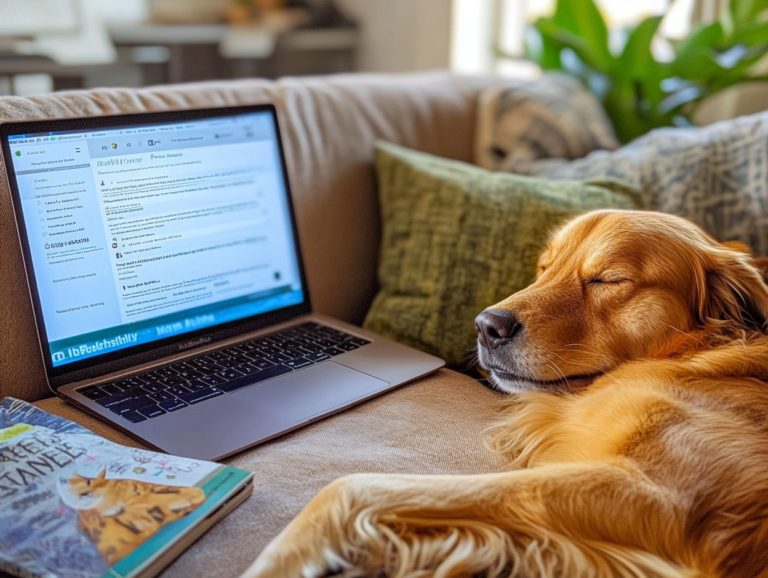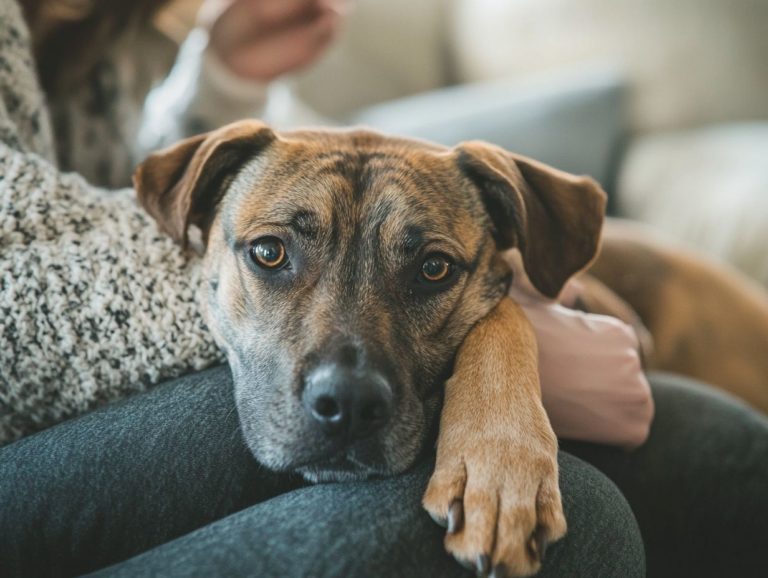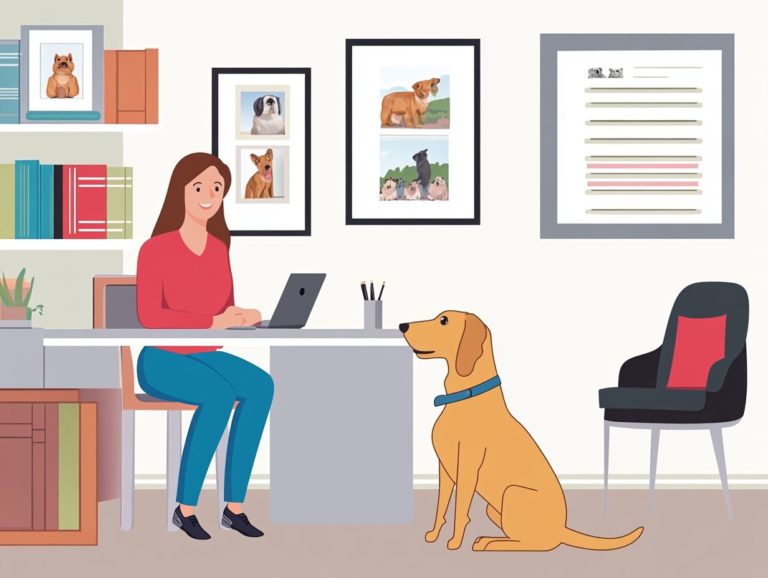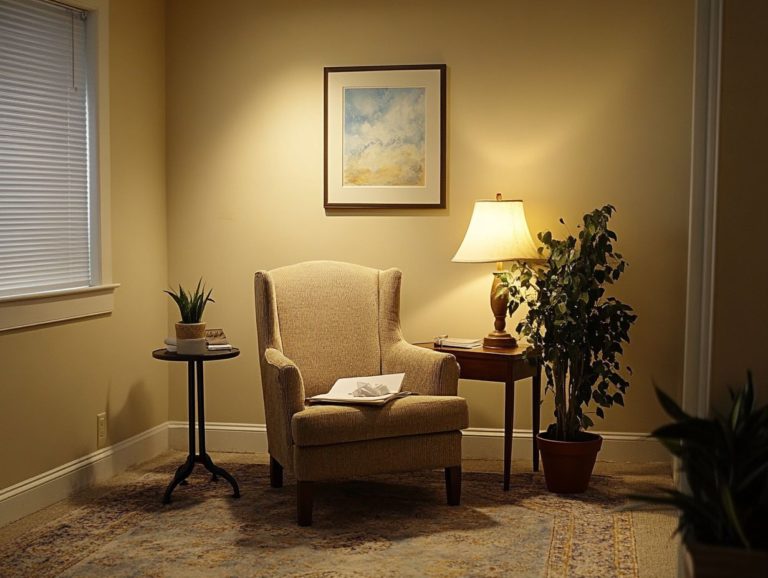What Are the Best Practices for Pet Owners and Anxiety?
Pet anxiety is a common issue that affects many beloved furry friends, often causing stress for both pets and their owners.
Understanding the causes and signs of this condition is essential for effective management. This article covers best practices you can adopt, from creating a safe space for your dog to building strong communication and bonding with your pet.
It also discusses various management strategies, including training and the potential use of medication. Discover proactive tips to prevent anxiety in your pets, ensuring they lead happy and healthy lives.
Your pet deserves the best learn how you can make a difference!
Contents
- Key Takeaways:
- Understanding Pet Anxiety
- Best Practices for Pet Owners
- Managing Pet Anxiety
- Preventing Pet Anxiety
- Frequently Asked Questions
- What are the best practices for pet owners and anxiety?
- How can I create a safe and calm environment for my anxious pet?
- When should I seek professional help for my pet’s anxiety?
- Can pets experience anxiety just like humans?
- What can I do as an owner to help my pet with their anxiety?
- How important is self-care for pet owners with anxious pets?
Key Takeaways:
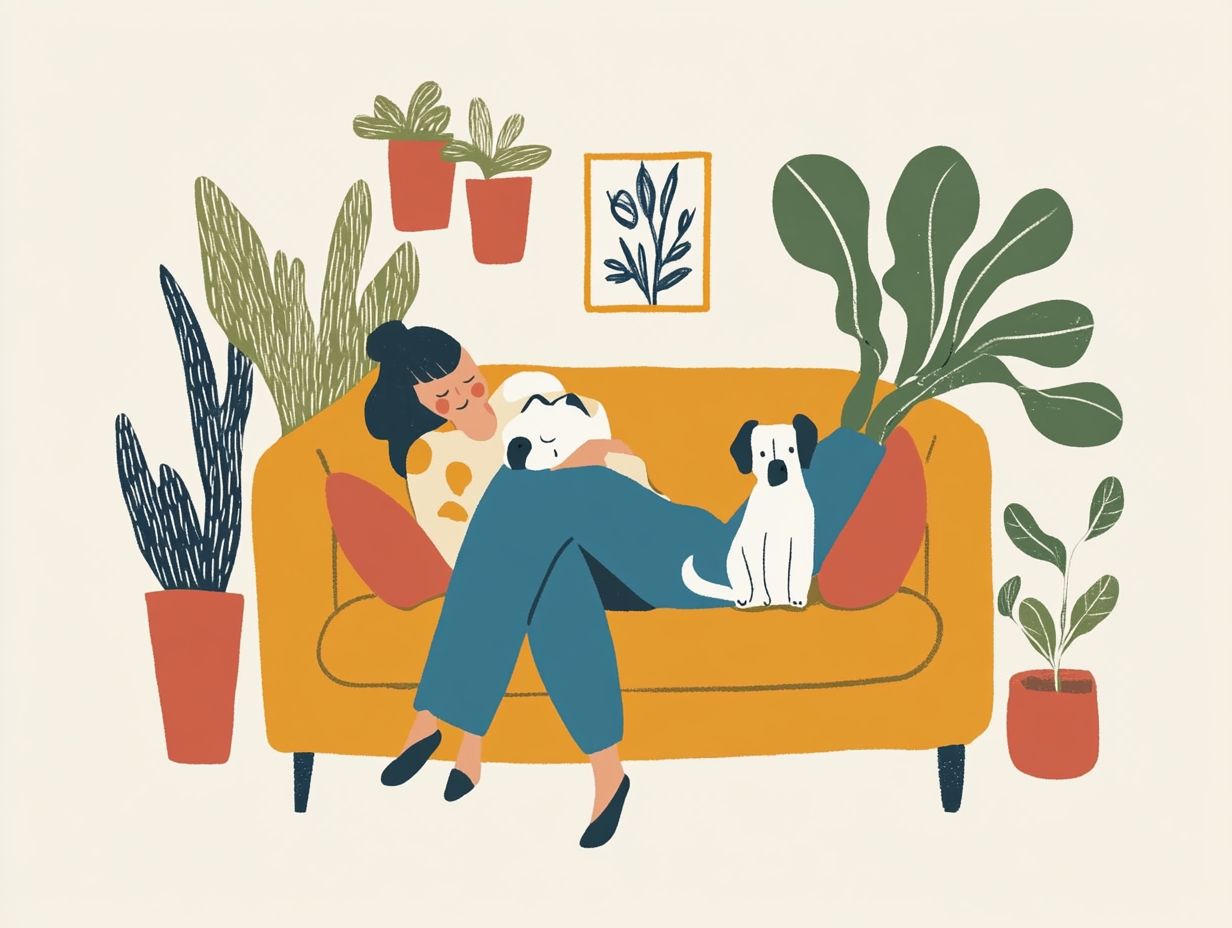
- Creating a comfortable environment is crucial for pets with anxiety. This means providing a familiar space and a consistent daily routine.
- Effective communication and bonding between you and your pet can significantly reduce anxiety. Spend quality time together, use positive reinforcement, and learn to read their body language.
- Training and therapy, along with possible medication, are effective ways to manage pet anxiety. Always work closely with your veterinarian to find the best treatment for your pet.
Understanding Pet Anxiety
Understanding pet anxiety is crucial for every dog owner, as it deeply affects your beloved canine companion’s emotional health. For more insights, check out what you should know about therapy for anxious pets. Dogs can experience different types of anxiety, such as separation anxiety, fear-related anxiety, and anxiety due to aging. These can show up as behavioral issues like excessive barking, destructive chewing, or withdrawal.
Recognizing these challenges early is vital for effective support. By identifying signs of anxiety, you can create tailored strategies to build your dog’s confidence and provide a more secure environment, leading to a happier, healthier pet.
Causes and Symptoms
Dog anxiety can stem from various sources, including past traumas, environmental changes, or insufficient socialization. Recognizing symptoms is crucial for timely intervention.
Many dogs may react to environmental factors like loud noises, unfamiliar places, or other animals, causing distress. If your dog has experienced abuse or abandonment, certain situations may trigger heightened anxiety. Genetics can also play a role; some breeds are more prone to anxiety due to their temperament.
Common signs include excessive barking, pacing, and unusual body language, such as cowering or hiding these indicate your furry friend may be struggling. By understanding these triggers, you can provide better support for your pet.
Best Practices for Pet Owners
Best practices for pet owners involve creating a nurturing environment for your dog, ensuring both their emotional and physical needs are met to reduce anxiety and promote well-being. For tips on traveling with anxious pets, it’s important to establish a soothing space where they can retreat when stressed, maintain consistent routines, and provide regular exercise and proper nutrition.
Using techniques like positive reinforcement rewarding good behavior socialization, and understanding dog body language is essential for recognizing their needs and alleviating anxiety symptoms.
Don’t wait start implementing these strategies today to help your pet feel secure and loved!
Your Dog’s Comfort and Safety
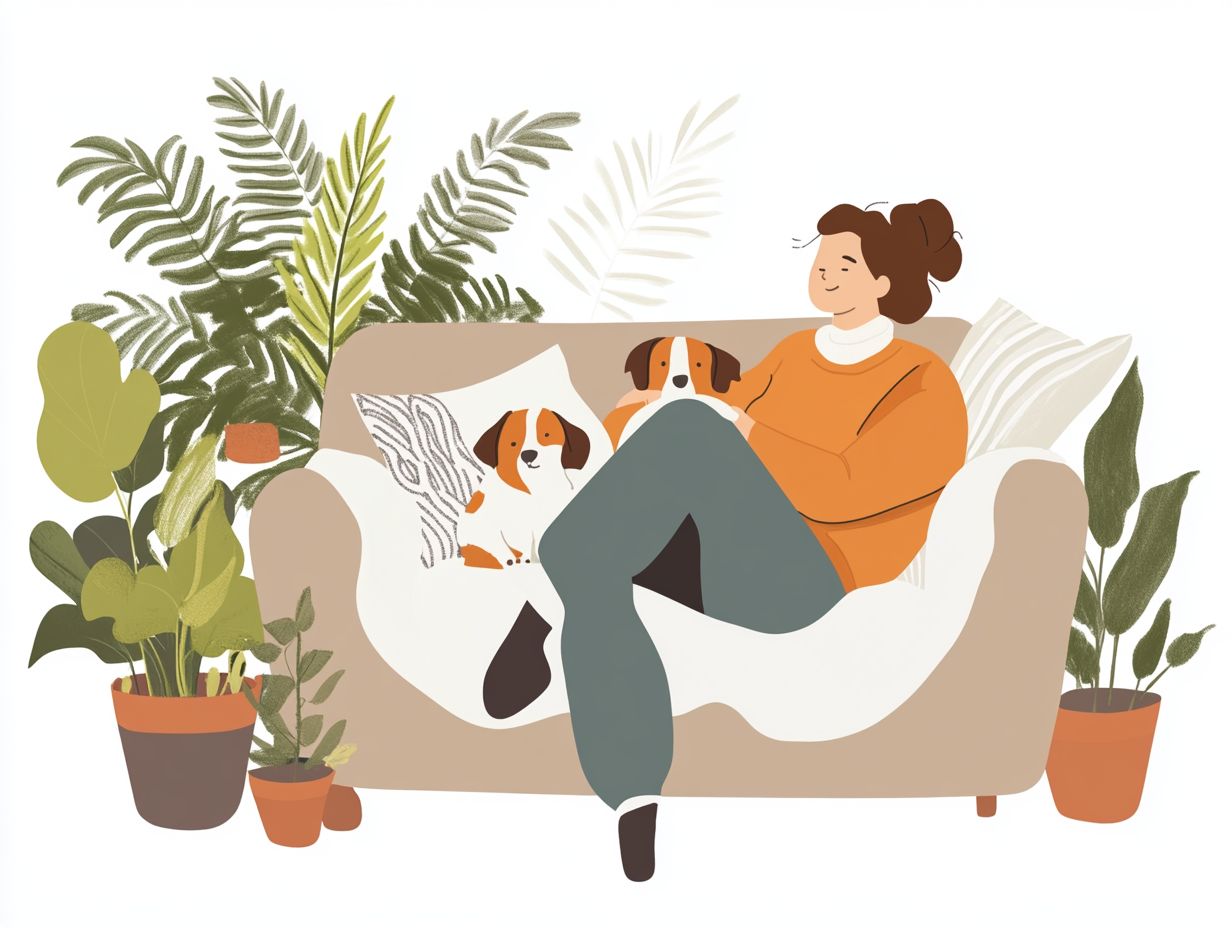
Creating a safe and comfortable environment for your dog is essential in managing anxiety and fostering a sense of security. To learn more about this and other strategies, explore resources for learning about pet anxiety.
You can achieve this through a variety of methods tailored to their unique needs and preferences.
One effective approach is to establish a designated quiet space filled with soft bedding and familiar toys, giving your dog a retreat whenever they feel overwhelmed. Incorporating calming scents like lavender can enhance relaxation. Gentle music or white noise can mask disruptive sounds from outside.
It’s crucial to pay attention to your dog s body language. Signs like tucked tails or pinned ears indicate discomfort, while a relaxed posture suggests they feel safe. Understanding these signals helps you refine their environment and recognize when additional calming techniques, such as gentle petting or positive reinforcement, might be necessary.
Effective Communication and Bonding
Effective communication and bonding with your dog can significantly alleviate anxiety, nurturing a trusting relationship that enhances emotional well-being.
By using techniques such as positive reinforcement rewarding good behavior you can cultivate a rewarding environment that encourages desired actions. It’s also vital to understand your canine companion’s body language, as this insight allows you to grasp their needs and feelings at a deeper level.
Engaging in simple activities like playful interactions, cuddling, and regular exercise not only fortifies this connection but also promotes a healthier lifestyle for both you and your dog. These meaningful bonding experiences pave the way for more effective communication, ultimately leading to a happier and more confident pet who feels secure in their home.
Managing Pet Anxiety
Effectively managing your pet’s anxiety demands a thoughtful integration of training, a clear understanding of anxiety treatment options, and knowing what to do if my pet develops anxiety suddenly, along with collaboration with a skilled dog trainer when needed.
Training and Therapy
Training and therapy play a crucial role in addressing dog anxiety, emphasizing the importance of teaching self-control and helping your dog confront their fears.
One particularly effective approach is obedience training, which lays the groundwork for trust and communication between you and your furry companion. By employing structured commands like “sit” and “stay”, your dog learns to focus on you an invaluable skill in tense situations.
Gradual exposure to specific anxiety triggers can help desensitize your dog over time, enabling them to better cope with overwhelming stimuli. If you’re unsure about the next steps, consider reading what to do if your pet is anxious after moving. Engaging a professional dog trainer who specializes in anxiety management can significantly enhance this process, providing tailored strategies and consistent guidance to cultivate a calmer, more confident pet.
Medication and Supplements
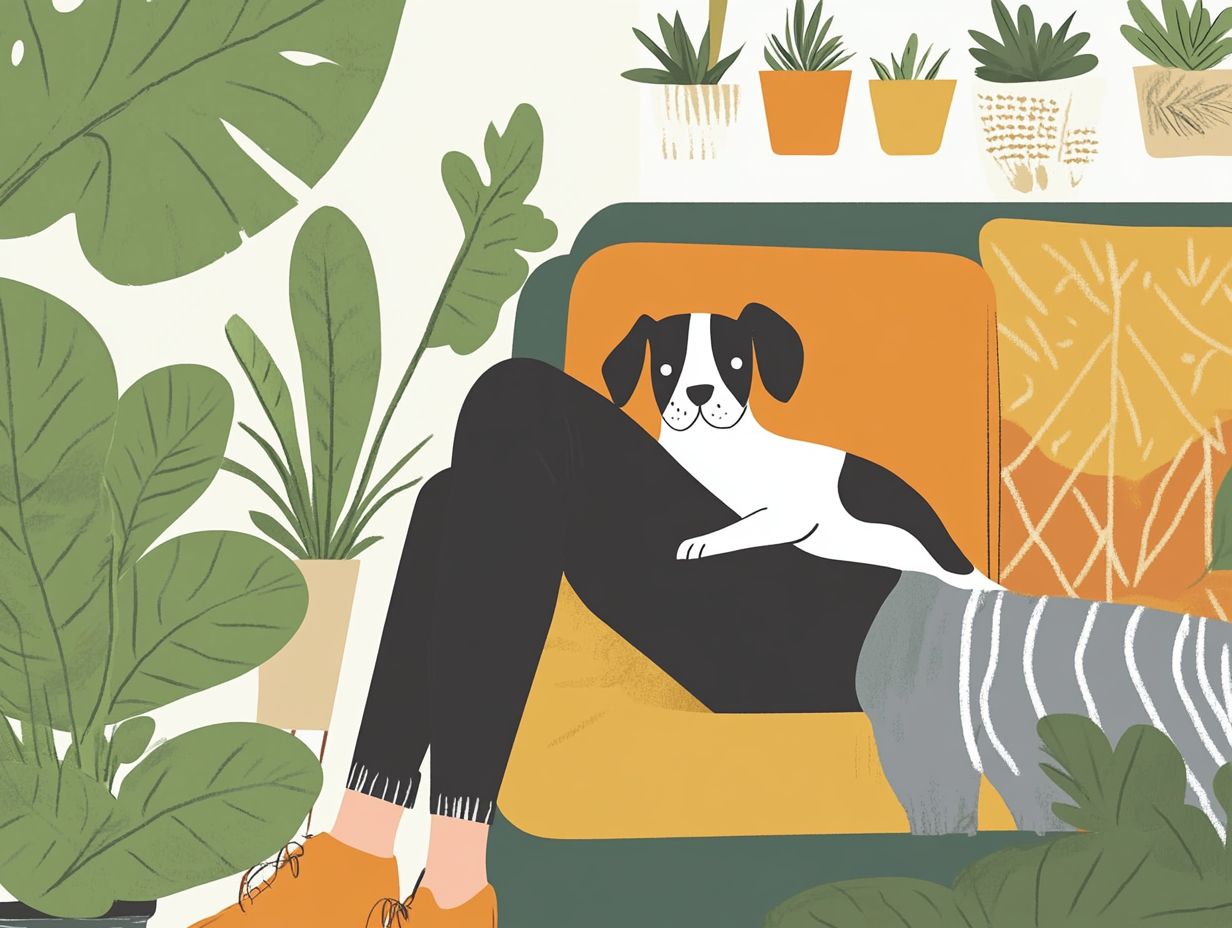
In certain situations, you might find that medication and supplements are necessary to effectively manage severe anxiety in dogs. Don’t hesitate to consult a veterinarian for safe and effective treatment.
Veterinarians can guide you through a range of treatment options, including traditional medications like:
- Fluoxetine a selective serotonin reuptake inhibitor that balances chemicals in the brain that affect mood.
- Sertraline another option to help manage anxiety.
Natural alternatives, such as CBD oil, have surged in popularity for their calming effects, offering a gentler option with fewer side effects than prescription drugs. Supplements like L-theanine and valerian root can also help alleviate anxious behaviors.
Pairing these treatments with behavioral therapies can significantly enhance your dog’s quality of life. It s crucial to approach these options holistically, creating a tailored plan that addresses your dog’s unique needs and health considerations.
Preventing Pet Anxiety
Preventing pet anxiety is a proactive journey that requires you to truly understand your dog s needs.
By implementing effective training methods, you can cultivate their emotional resilience and create a more harmonious environment for both of you.
Are you ready to create a calming space for your furry friend? Start your training journey today for a happier, anxiety-free dog!
Tips for Preventing Anxiety in Pets
Implementing specific strategies can significantly reduce anxiety in pets, enhancing their happiness and fostering a more harmonious relationship with you. If you notice changes in their behavior, it’s important to know what to do if your pet’s anxiety worsens.
By emphasizing gradual socialization, you can introduce your furry friend to new experiences, people, and environments in a controlled and reassuring manner. Identify and avoid high-stress situations, such as loud gatherings or unfamiliar places, to minimize anxiety triggers.
Incorporating stress relief techniques like gentle massage and soothing music creates a calming atmosphere. Engaging in interactive games provides vital mental stimulation. Use positive reinforcement training. It builds confidence and reduces fear, nurturing a more balanced emotional state in your cherished canine companion.
Regular Check-Ups and Care
Regular vet visits keep your pet healthy and happy! They allow for early detection of potential health issues, leading to timely interventions that keep your dog’s body and mind in prime condition.
Alongside medical care, proper nutrition and regular exercise are key pillars supporting your dog’s overall health and well-being. A balanced diet fuels daily activities and influences their mood and behavior.
Consistent physical exercise releases pent-up energy, effectively reducing stress and anxiety levels.
By adopting this overall care, you create a harmonious environment where your dog can truly thrive, ultimately enhancing their quality of life.
Frequently Asked Questions
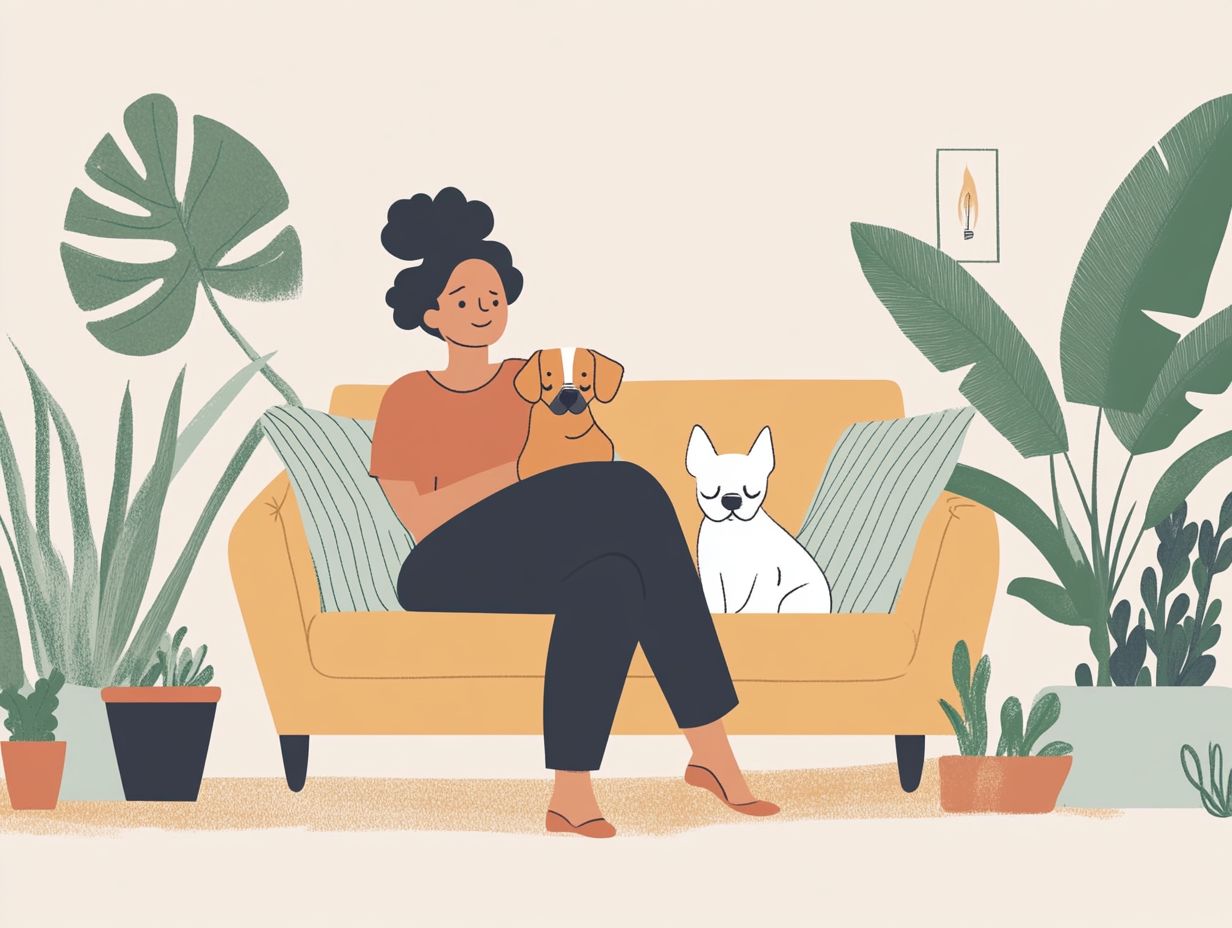
What are the best practices for pet owners and anxiety?
The best practices include providing a safe and calm environment for your pet, seeking professional help if necessary, and exploring natural remedies for pet anxiety while practicing self-care as an owner.
How can I create a safe and calm environment for my anxious pet?
You can create a safe and calm environment by establishing a routine, providing a comfortable and quiet space, and using calming techniques such as aromatherapy or music.
When should I seek professional help for my pet’s anxiety?
If your pet’s anxiety is seriously affecting their happiness, act now! Seek professional help from a veterinarian or animal behaviorist.
Can pets experience anxiety just like humans?
Yes, pets can experience anxiety just like humans. They may exhibit similar symptoms such as restlessness, excessive barking or meowing, and changes in eating habits.
What can I do as an owner to help my pet with their anxiety?
As an owner, be patient and understanding. Provide love and support, and learn calming techniques together.
How important is self-care for pet owners with anxious pets?
Self-care is crucial for pet owners with anxious pets. Caring for a pet with anxiety can be emotionally and physically draining. If you’re wondering what to do if your pet gets anxious in public, remember that taking care of yourself allows you to better meet your pet’s needs.
Take the first step towards a happier pet today!

